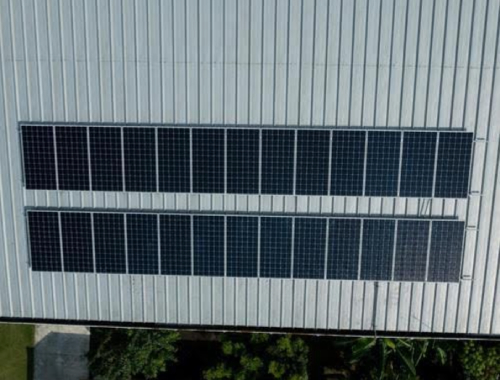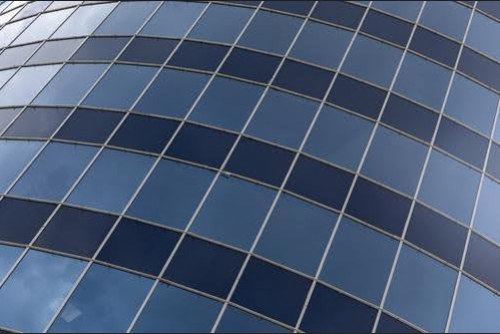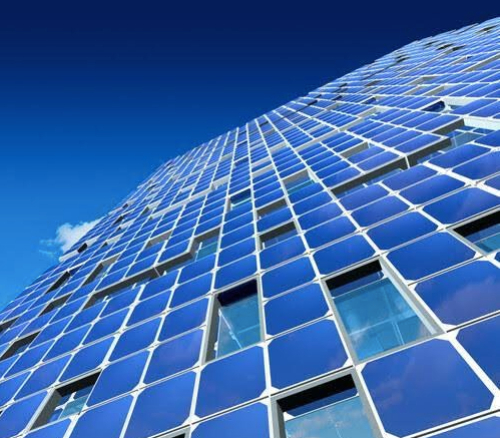With the rising use of renewable energy, architects and property owners are exploring ways to blend aesthetics with function. Solar panel siding is one of the most exciting innovations, transforming building exteriors into energy-generating surfaces. Unlike traditional rooftop arrays, this system is built into the facade, making sustainability a conscious design decision.
One of the factors in the assessment of new technologies is the return on investment (ROI). Homeowners are interested in the speed at which their savings will be recouped in terms of installation costs, and developers of large projects need to compute long-term payback. This guide will discuss the variations in ROI between residential and commercial uses, demonstrating why solar siding panels are transforming both markets.
What is Solar Panel Siding?
Fundamentally, solar panel siding is an exterior cladding system designed to do more than shield buildings. The panels capture sunlight and convert it into usable electricity without compromising the functionality of a conventional facade. This renders it one of the most innovative forms of solar siding panels in the market today.
To homeowners, solar panel house siding offers them a chance to energize their homes and minimize the use of grid electricity. These panels also provide modern curb appeal in addition to utility savings. To architects, incorporating solar siding for homes is a move towards multi-purpose materials that are both efficient and aesthetically pleasing.
The technology can be applied on a larger scale tosolar siding for houses, enabling developers to incorporate sustainability into residential communities. This method eliminates the need for visible arrays on the roof and allows for architectural freedom by integrating energy generation into the walls themselves.
How Solar Facade Systems Work
The idea of a solar facade may seem futuristic, yet the technology is actually quite simple. Rather than installing modules on rooftops, energy-generating materials are incorporated into cladding systems. These facade solar panels harness the sun and direct electricity to the power infrastructure of the building, similar to rooftop systems.
Solar glass panels are some of the advanced materials that are important here. These panels are both transparent and efficient, and they can still filter light while generating electricity. This is a game-changer for commercial buildings with large glass surfaces.
These systems are based on the technology of BIPV panels, which is an abbreviation for building-integrated photovoltaics. A photovoltaic solar panel facade is not an appendix but a complete component of the building envelope. Solar facade cladding allows architects to create exteriors that are aesthetically appealing and energy efficient. Elemex has played a significant role in enhancing this integration, enabling architects to bring solar cladding ideas to reality without compromising aesthetics.
ROI for Solar Siding in Homes

In the case of solar siding on homes, ROI can start with the initial investment. The cost of installation is usually more expensive than that of traditional siding, but the savings in the long run are substantial. Solar siding on houses can pay back in 8-12 years by saving money on monthly electricity bills, depending on the energy rates and incentives.
Government rebates, tax credits, and financing programs further reduce the payback period. In most areas, utilities also enable homeowners to sell surplus energy to the grid, increasing total returns. Solar panel house siding is a financial and lifestyle upgrade to households that intend to remain long-term.
These systems enhance property value in addition to direct savings. Energy-efficient solar siding panels on a home are very attractive to environmentally conscious consumers. The modern design and low energy expenses provide a competitive advantage in the real estate markets. Aesthetic benefits are important as well. Solar siding does not look like a vast array on the roof; it is a part of the architecture, and it is beautiful as well as sustainable.
ROI for Solar Siding in Commercial Buildings
Commercial projects are run at a different level than residential projects. A solar panel facade is more expensive to install, but the long-term payback can be more than the expenses. Big buildings use a lot of electricity, and even a small offset can lead to a huge saving in a year.
The possibility of covering large areas of surfaces is one of the main benefits of a photovoltaic solar panel facade. The facades of office towers, shopping centres, and institutional buildings are large enough to produce quantifiable quantities of electricity. The energy production cost savings can amount to hundreds of thousands of dollars over a 20–25-year period.
Access to sustainability incentives is another factor that enhances ROI in commercial projects. Tax credits, rebates, or accelerated depreciation of properties using solar facade cladding are available in many governments and municipalities. For developers, this translates to reduced payback periods and value-added benefits in the form of LEED or green certification credits. Moreover, a solar facade will enhance corporate image, making the property a progressive and environmentally friendly investment.
Comparing Residential vs Commercial ROI
The payback period for solar siding panels varies between residential and commercial projects. In the case of solar siding on homes, it is cheaper, but the energy savings are also less. Most homeowners see payback in under 12 years, particularly when they receive government incentives. Conversely, at a community level, solar siding of houses can utilize bulk installations, reducing the cost per unit.
Commercial buildings have increased initial investments but tend to pay back faster due to economies of scale and increased energy requirements. A panel powered by the sun over an office tower can save a lot of electricity consumption, and ROI is realized within a short period of 7-10 years. In comparison, smaller residential projects tend to have a slightly longer schedule.
Another consideration is maintenance. The BIPV panel systems installed in commercial buildings are made to last long and require less maintenance. Although residential owners also enjoy reduced maintenance expenses, commercial operators typically have service contracts that guarantee uniform performance.
Comparing the two, it is evident that both offer good ROI, albeit in different ways: homes have the advantage of property value increases and lower bills, whereas businesses have the advantage of sustainability branding, tax incentives, and increased energy savings.
Key Factors That Influence ROI in Solar Siding

In the case ofsolar siding panels, the payback period is based on several practical factors. These should be remembered in both residential and commercial projects:
- Location & Sunlight Exposure: The more direct sunlight, the better the performance of facade solar panels.
- Installation Costs: Solar siding on homes is cheaper to install initially, whereas commercial solar panel facade systems demand more initial investment.
- Energy Demand:Photovoltaic solar panel facade systems are more advantageous for larger buildings with greater electricity consumption.
- Government Incentives: Tax credits, rebates, and grants greatly reduce payback periods for both homeowners and developers.
- Maintenance Requirements: Solar siding of houses and commercial systems requires minimal maintenance to maintain consistent performance over decades.
Environmental Benefits Beyond ROI
Although financial savings are one of the main factors, the environmental advantages ofsolar siding panels cannot be neglected. According to a report, “In 2023, buildings accounted for 32 per cent of global energy demand and 34 per cent of CO₂ emissions” (GlobalABC).
Every installation helps to decrease carbon emissions by substituting grid electricity with clean energy. For homeowners, this translates to a reduced household footprint. In the case of corporations, it supports broader sustainability objectives.
The integration of solar-powered glass in commercial buildings makes buildings part of the solution to the city’s energy problem. In addition to savings, they are also proactive in producing renewable energy in areas where it is most needed. Similarly, residential solar siding helps communities achieve energy independence.
Green building certifications are also achieved through a solar panel facade. Renewable energy credits are incorporated into LEED and other standards, enhancing the building’s environmental profile and its marketability. The design innovation and quantifiable effects ensure that solar facade cladding is attractive to both environmentally conscious customers and progressive architects.
Solstex: A Trusted Solar Siding Solution

Not every solar system is equal, and that is why it is necessary to select a proven provider. Elemex created Solstex to introduce the advantages of solar panel siding within architectural design. Solstex is a solar module that is integrated into building envelopes, unlike traditional add-on solar modules.
This system also utilizes the latest photovoltaic solar panel facade technology, ensuring effective energy generation without compromising design flexibility. Architects can use Solstex to specify both solar sidingon homes and large-scale commercial facades, and be sure that it will achieve both performance and aesthetic objectives.
Conclusion
With the construction industry adopting renewable energy, solar panel siding is one technology that can provide both economic and environmental benefits. For homeowners, it offers lower bills, a higher property value, and long-term savings. For commercial developers, it generates quantifiable ROI in the form of energy offsets, tax incentives, and sustainability certifications.
Whether used as solar siding on houses or large-scale facade solar panels on commercial buildings, the payoff extends beyond the monetary reward. Solar cladding is a progressive option in all industries due to reduced carbon emissions, improved branding, and flexibility in design.
Elemex has been a leader, offering proven solutions like Solstex, and provides innovative systems that integrate clean energy directly into buildings. Solar siding combines technology and architecture to ensure that future projects are not only practical but also sustainable. Contact us today to learn more.

